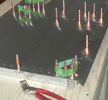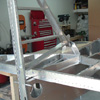


random user submitted photo
Aerovee secondary/electronic ignition current draw?
19 posts
• Page 1 of 2 • 1, 2
Aerovee secondary/electronic ignition current draw?
Hi ya'll,
So I'm making my wiring/electrical-endurance spreadsheet. Do any of ya'll know what the typical current draw is for the electronic ignition? I don't need super exact, just ballpark.
Kevin
So I'm making my wiring/electrical-endurance spreadsheet. Do any of ya'll know what the typical current draw is for the electronic ignition? I don't need super exact, just ballpark.
Kevin
-

kevinh - Posts: 372
- Joined: Mon Feb 23, 2015 10:46 pm
- Location: San Mateo, CA
Re: Aerovee secondary/electronic ignition current draw?
I believe it is 7amps.
Building: [11323] Zenith 750 CruzerDuty27.5 / O-320 [Instagram Build Log: Zenith750CruzerSTOL]
N67LJ - Vans RV-9A #90504 (SOLD)
N83LJ - Sonex #0864 (SOLD)
https://rvpilotlife.wordpress.com/blog/home/
N67LJ - Vans RV-9A #90504 (SOLD)
N83LJ - Sonex #0864 (SOLD)
https://rvpilotlife.wordpress.com/blog/home/
-

jjbardell - Posts: 315
- Joined: Wed Feb 25, 2015 5:12 pm
Re: Aerovee secondary/electronic ignition current draw?
Thanks. Really? Did you measure that? I say this for two reasons, the original aerovee alternator was only 10A and the electronic ignition on the IO360 clone I had in my RV was only 1.2A.
Kevin
Kevin
-

kevinh - Posts: 372
- Joined: Mon Feb 23, 2015 10:46 pm
- Location: San Mateo, CA
Re: Aerovee secondary/electronic ignition current draw?
Without having any actual specifics for this case, I think Kevin is correct, 7 amps has the sound of being way too high.
Waiex 158 New York. N88YX registered.
3.0 Liter Corvair built, run, and installed.
Garmin panel, Shorai LiFePo batteries.
3.0 Liter Corvair built, run, and installed.
Garmin panel, Shorai LiFePo batteries.
- GordonTurner
- Posts: 668
- Joined: Tue Feb 21, 2012 1:14 am
- Location: NY, NY
Re: Aerovee secondary/electronic ignition current draw?
Actually jjbardel is close to correct.... I measured mine several years back and it was close to 7 amps!..... This was done cuz I was having trouble with battery charging and I believed the alternator was not putting out enough to operate all the equipment and charge the battery. As a side note, I have gotten into the habit of switching OFF the secondary ignition once I'm airborne. It makes a huge difference (for me) with voltage I see on my meter and in keeping the battery charged up. I switch it back ON once I'm back in the pattern.
G. Marsolais
Waiex w/Turbo Aerovee
Rotec TBI, Sensenich Climb Prop
MGL Xtreme EFIS & EMS
A/P, iFly720 w/ADS-B
Waiex w/Turbo Aerovee
Rotec TBI, Sensenich Climb Prop
MGL Xtreme EFIS & EMS
A/P, iFly720 w/ADS-B
- marsolgp
- Posts: 119
- Joined: Thu Feb 14, 2013 8:29 pm
- Location: Kansas
Re: Aerovee secondary/electronic ignition current draw?
Thanks! That helps a lot!
-

kevinh - Posts: 372
- Joined: Mon Feb 23, 2015 10:46 pm
- Location: San Mateo, CA
Re: Aerovee secondary/electronic ignition current draw?
Thanks. Really? Did you measure that? I say this for two reasons, the original aerovee alternator was only 10A and the electronic ignition on the IO360 clone I had in my RV was only 1.2A.
Kevin
I think the version 2.0 and later engines have a 20 amp alternator due to the addition of the electronic ignition. The versions with the 10 amp alt. were single ignition models.
Bill Larson
N861SX
Sonex, polished, tail wheel, Generation 4 Jabiru 3300
N861SX
Sonex, polished, tail wheel, Generation 4 Jabiru 3300
- wlarson861
- Posts: 499
- Joined: Wed Dec 05, 2012 11:41 pm
Re: Aerovee secondary/electronic ignition current draw?
The explanation for it being about 7 amps is that each coil is 4 ohms. The triggers charge each coil and reach a steady state current of about 13v/4ohm = 3.2 amps across each one. My first two coils failed around 200 hours after becoming 2 ohms and drawing double the current.
A different design could charge each coil just in time for when it is needed, but you have to provide enough margin for acceleration of the engine. The magnetron ignition works this way because it uses the passing magnet to charge the coil before triggering.
A capacitive discharge ignition would also draw much less average current. If the 7 amps quoted by others was measured with the engine running then the coils are constantly charged except briefly while firing. I haven't personally measured it but don't find it surprising.
I do know that the triggers turn off if they haven't fired in a while--this prevents draining the battery too much before starting the engine at the expense of not firing the first time the magnet passes when starting the engine.
A different design could charge each coil just in time for when it is needed, but you have to provide enough margin for acceleration of the engine. The magnetron ignition works this way because it uses the passing magnet to charge the coil before triggering.
A capacitive discharge ignition would also draw much less average current. If the 7 amps quoted by others was measured with the engine running then the coils are constantly charged except briefly while firing. I haven't personally measured it but don't find it surprising.
I do know that the triggers turn off if they haven't fired in a while--this prevents draining the battery too much before starting the engine at the expense of not firing the first time the magnet passes when starting the engine.
- gammaxy
- Posts: 600
- Joined: Wed Sep 04, 2013 9:31 am
Re: Aerovee secondary/electronic ignition current draw?
Interesting- sounds like we could use an inverter. Besides reducing the current we would dissapate less power in the coils and make less heat.
Bryan Cotton
Poplar Grove, IL C77
Waiex 191 N191YX
Taildragger, Aerovee, acro ailerons
dual sticks with sport trainer controls
Prebuilt spars and machined angle kit
Year 2 flying and approaching 200 hours December 23
Poplar Grove, IL C77
Waiex 191 N191YX
Taildragger, Aerovee, acro ailerons
dual sticks with sport trainer controls
Prebuilt spars and machined angle kit
Year 2 flying and approaching 200 hours December 23
-

Bryan Cotton - Posts: 5489
- Joined: Mon Jul 01, 2013 9:54 pm
- Location: C77
Re: Aerovee secondary/electronic ignition current draw?
gammaxy wrote:The explanation for it being about 7 amps is that each coil is 4 ohms. The triggers charge each coil and reach a steady state current of about 13v/4ohm = 3.2 amps across each one. My first two coils failed around 200 hours after becoming 2 ohms and drawing double the current.
Measuring the DC resistance of the coils and then calculating DC current does not result in the actual current when the engine is running, since the coils are an inductive load. In order to calculate the running state current the inductive reactance of the coils would have to be determined.
Terry L. Cooper
SNX #1508 Tail Wheel
AeroVee #0736
N296SX
Aircraft build took 2005 hours, and was completed in October 2016
http://www.mykitlog.com/SNX1508
https://www.youtube.com/watch?v=K9wP77I ... e=youtu.be
FAA Inspected & Airworthiness Certificate issued 11/4/2016
Completed training in a Citabria for tail wheel experience. Currently training in a Czech Sport Cruiser for ASEL endorsement on my Sport Pilot certificate.
- SNX1508
- Posts: 74
- Joined: Sun Dec 11, 2011 6:53 am
19 posts
• Page 1 of 2 • 1, 2
Who is online
Users browsing this forum: No registered users and 25 guests







